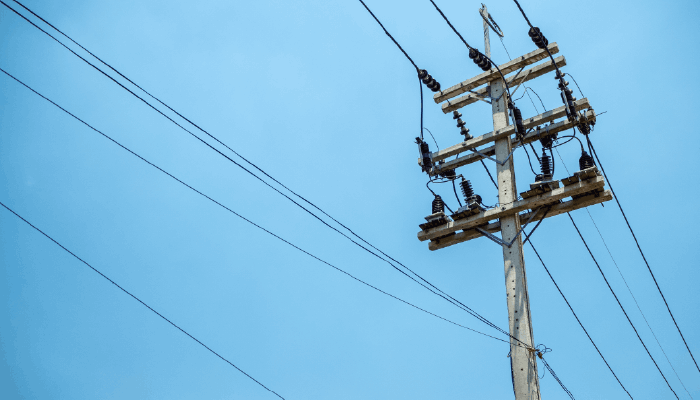Joint Use 101 for Utility Poles and Other Assets
By the middle of the 20th century, many Americans likely felt they had reached the pinnacle of high-tech living. In electric-powered homes equipped with telephones, radios, and TV sets, they were connected to the world in ways unlike any generation before. Utility poles and antennas dotted the landscape, symbolizing an exciting technological revolution.
Fast forward 70 years later, and those early technologies seem like relics of the past. Now, most Americans carry with them a single device that offers a multitude of ways to communicate and receive information. The infrastructure that supports this technology still hangs on utility poles or is carried in underground conduit vaults. Utility poles and vaults are often shared by cable television (CATV), broadband, and wireless communications companies. The sharing of these infrastructure assets is called "joint use."
As media outlets multiply and technology grows in sophistication, joint use asset management becomes more and more complex.
The Elements of Joint Use
Joint use first became challenging during the growing popularity of cable television in the late 1970s and early 1980s. With such a fast-growing demand for services, it quickly became apparent that sharing infrastructure made the most sense. The reasons for joint use are simple. First, there is not enough space for every company to install its own infrastructure. Second, it would be cost-prohibitive. And third, people don't typically want to live in a forest of utility poles.
The joint use community has two main groups:
- Asset owners – bodies who own utility poles, conduit vaults, right of way, and associated equipment
- Attaching companies or renters – companies that rent infrastructure space from the asset owner to place their equipment, such as attachments on a pole or cables in an underground vault
These days, many companies have joint use departments. Data must be managed. Permit applications must be reviewed. Rental contracts must be written, executed, and maintained.
The typical attachment process generally lasts about 30 to 90 days. Attaching companies must submit a "permit to attach" to the asset owner. The owner then has a specific timeframe to approve or deny the request. Several steps may occur before approval, such as a field survey, cost estimate, and contractor approval. However, when the application is approved, it does not mean the end of the interactions between the asset owner and attacher. Constant communication is desired to address changes and issues that arise.
The Challenges of Joint Use
The growing number of companies needing access to utility and communications infrastructure has multiplied the challenges facing joint use professionals. Based on our close relationship with members of the joint use community, we have heard and witnessed several problems. Here are a few:
- Inaccurate utility pole data - Utilities once only used paper records to keep track of pole information, then most eventually moved their data to spreadsheets. The information that was transferred, however, was often out of date and remained uncorrected. Not storing data in a modernized, digital system is a recipe for chaos.
- Pole damage - Weather, foliage, and time can take a toll on infrastructure that a simple asset record may not reflect. Pole rot is common in neglected poles, and several forgotten poles suffer from splitting.
- Illegal attachments - Some companies attach equipment to another's property without permission. This is especially confusing when an approved company tries to attach to a pole.
- Pole overloading - Asset records may not accurately reflect the number of attachments on a pole, creating the risk of a pole bearing more equipment than it can safely stand. This can be dangerous for public safety.
- Double poles/buddy poles – Often, a new pole is placed beside an old one, but the transfer of multiple attachers' equipment to the new pole is done haphazardly or not at all.
- Backlogs - Joint use staff may be overwhelmed by the growing number of requests.
Joint Use Solutions
The good news is that there are solutions to the challenges listed above. At Alden, we help joint use professionals solve daily challenges through two simple solutions: data collection and data management. Each of these solutions addresses multiple problems in joint use. While each can be used separately, together they represent a comprehensive approach to simplifying joint use.
To ensure data on all assets is complete and updated, there's no substitute for inspections. An experienced professional inspector or new drone technologies can spot illegal or faulty attachments, assess the condition of assets, and determine available space on each asset. Inspections can conserve asset owners spend, provide crucial information, and keep communities safe.
Effective and efficient management of all joint use data is essential as deployment grows. Paper records and spreadsheets can no longer handle the job. Joint use professionals need the best tools available to streamline all processes in an integrated, coordinated way.
Our platform, Alden One®, is the national leader in joint use management. It has everything joint use professionals need to manage attachments, permit applications, contracts, and data. Updating information is easy, and communicating with other parties in the attachment process is streamlined. Alden One® provides the best way for joint use professionals to work better together, make better decisions, and take swift action.
For a more detailed look at the basics of joint use, watch our video, Joint Use 101: Learning the Basics (runtime: 11 minutes). Click here to talk with a product specialist about the advantages Alden can bring to your outside plant operation.

